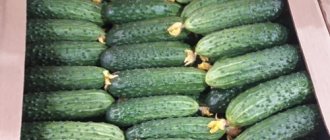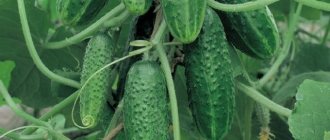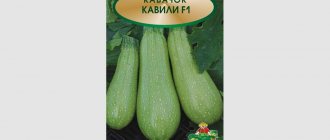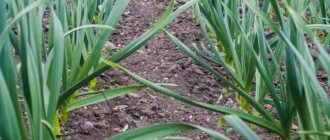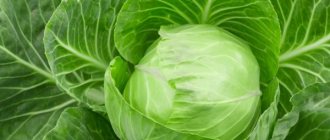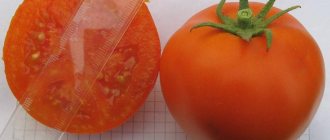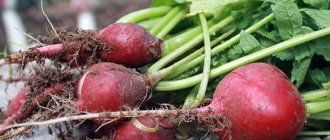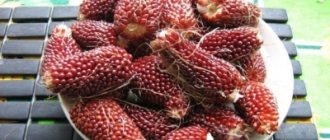Small pickled cucumbers (cucumber) are an integral part of almost every feast. They are liked by many summer residents, who plant different varieties to suit their taste, producing small and tasty fruits. By the way, a gherkin is not a variety of cucumber, but a size, so you can collect it from different plants. Read on to learn how to choose the right gherkin varieties, why salad varieties are best suited for these purposes, and how to properly implement agricultural practices. Also from this review you will learn how and where the variety of small cucumbers appeared, what yields can be harvested on your site, and what you need to know about pest control.
Characteristics and description of gherkin cucumbers
Gherkins are a size, not a type, of cucumber. That is, theoretically, they can be collected from any crop, although salad crops produce the most delicious (in this case, juicy and crunchy) fruits. Gherkins are picked 1-2 days after the ovaries appear - when the length of the fruit is several centimeters (usually no more than five). Even such small, unripe cucumbers are quite tasty, have an appetizing crunch and are ideal for pickling. The characteristics of the fruit directly depend on the best varieties for pickling grown on the site. If you want the harvest to be tasty, beautiful and not bitter, choose appropriate crops.
Gherkins differ from other cucumbers in their size
Gherkin (from the French cornichon) are small cucumbers from 3 to 5 cm long, harvested immediately after the end of flowering of the cucumber plant. They are used mainly for pickling and salting.
Cucumbers in their own juice
by Ledi Irin
For 1 kg of grated cucumbers use 2 tbsp. l. salt. At the bottom of a 3-liter jar put an umbrella of dill and a handful of grated cucumbers, a layer of cucumbers, a layer of grated cucumbers, chopped garlic, a layer of cucumbers. We finish with grated cucumbers, salt, the remaining juice of grated cucumbers and a large leaf of horseradish (so that the cucumbers do not mold).
Or you can immediately add chopped garlic, finely chopped dill, salt to the grated cucumbers, stir everything and fill the jars. Cover with a tight nylon lid.
If you don’t have a horseradish leaf, you can smear the inside of the nylon lid with ready-made mustard; it won’t get moldy either.
Wash the jar from drips and put it in the cellar. Such cucumbers are stored for 1.5-2 years. Soaked in garlic - the smell and crunch are just super!
You can use grated cucumbers for pickle in winter. We use overgrown cucumbers for grated cucumbers.
Features: gherkin sizes
Small cucumbers came from France - it was French breeders who set the fashion for crispy small fruits. Don't confuse gherkins with pickles - yes, some gherkins can be pickles, but not all. The first type of cucumber grows to a maximum of 9 cm, and usually no more than 5. It is a several-day-old fruit, which, from a botanical point of view, is more like an ovary. And the second type is any small pickled vegetables. That is, pickles can be cucumbers, tomatoes, onions, carrots, even corn cobs.
Gherkins have a number of differences from ordinary pickling and salad cucumbers. The main ones are high density and the absence of voids, due to which the vegetable turns out crispy.
What cucumbers should look like
Gherkins are cylindrical in shape and bright green in color (Meringue is a good example). The ripening time is short, the taste is high, and the fruits usually do not have time to acquire bitterness within a few days from the moment the ovaries form. Another important advantage of gherkins is their versatility (they can be pickled, salted, used for making salads, canapés, or eaten in their pure form). Hybrids are resistant to most pests, such as aphids, mites. The yield is not bad, the only disadvantage of the cucumber variety is the presence of prickly thorns.
They are cylindrical in shape and bright green in color.
The best varieties of small cucumbers
Below we will tell you about the best varieties and hybrids of gherkins, learn the rules of cultivation and the secrets of a rich harvest.
Children's f1
The hybrid is resistant to the main crop diseases: root rot and tobacco mosaic. The vegetable is grown not only in the garden, but also on the windowsill or balcony. It is recommended to plant Children's seedlings to avoid diseases.
The size of the fruit varies from 4 to 10 cm, weight is about 50 g. There are small pimples on the surface. The thick peel and crispy flesh are suitable for preparing various dishes: pickles, fermented preparations, pickled salads.
Diva f1
An early-ripening hybrid ripens 35-45 days after the appearance of the first shoots. The length of the cucumbers is from 10 to 12 cm, the average weight is 100 g. The surface is ribbed, the shape is cylindrical, rounded towards the tip. The pulp is pleasant, sweetish, no bitterness. The yield is stable; summer residents harvest about 15-20 cucumbers from 1 bush. Gardeners value the hybrid for its consistent fruiting and commercial qualities.
Important! Thanks to their dense peel, Primadonna gherkins are perfectly transported over long distances and retain their taste and appearance.
Parisian gherkin
This famous variety of gherkins is an early ripening variety - the harvest is harvested 40 days after the appearance of the first shoots. Plant the Parisian gherkin in a garden bed or in a greenhouse. The vegetable is resistant to high humidity and sudden temperature changes. The length of the cucumber is about 6 cm, weight 40-60 g. The taste is juicy, the surface is ribbed.
The variety is universal in use; cucumbers are consumed both fresh and canned.
Son of regiment f1
The maximum length of a cucumber is about 8 cm. The shape is round, the peel is covered with white pimples. The pulp is fleshy, there are a lot of seeds, the taste is pleasant. The hybrid is valued for its ease of care, stable fruiting and versatility.
It is recommended for beginning gardeners to plant this gherkin: caring for the vegetable does not require special agrotechnical skills .
Moth f1
Mid-early Moth is harvested 50 days from planting. The bushes of the hybrid are decorative and compact. The vegetables themselves grow elastic and crispy, the length of the gherkin is no more than 8 cm. The moth is suitable for preparing winter snacks - the vegetable does not lose its elasticity and retains its benefits.
Important! Gherkins contain potassium, which is necessary for the normal functioning of the kidneys and cardiovascular system. Eating gherkins removes excess fluid from the body and serves as a preventive measure for problems with the thyroid gland.
Puccini f1
The cucumbers are oblong in shape, with many small spines on the surface. The color is classic green, the flesh is sweet and juicy. From 10 to 15 fruits are removed from the bush at a time. The length of the vegetable is about 7 cm, weight 40-70 g.
The Puccini hybrid rarely gets sick and is not susceptible to insect pests. It has good shelf life and transportability.
Karapuz f1
Gherkins are grown in open ground or in greenhouses. They are planted with seedlings, having previously disinfected the seeds. The fruits are dense, uniform in color, rich green. The hybrid is distinguished by friendly fruit set and long fruiting. The taste is delicate, the purpose of the hybrid is universal.
The little one is resistant to cucumber mosaic and bacteriosis.
Thumbelina f1
The average length of a cucumber is 8 cm. The pulp is light green, there are many seeds. The taste is pleasant, the sweetness is moderate. The peel is thin, so it is recommended to consume or process the harvest within one to two weeks. Thumbelina is grown on the balcony or in warm and sunny beds.
Good varieties
Choosing the right variety is the key to successfully growing delicious gherkins. Most Popular:
- “Parisian gherkin” is an early-ripening crop, pollinated by bees. The first harvest is harvested 41 days after planting in the ground. The fruits reach 6-10 cm in size.
- “Moravian Gherkin F1” has high taste qualities and grows no worse in the ground than in greenhouses.
- “Gerda F1”, “Kai F1 ” - these varieties have similar parameters and give a good harvest even in conditions of lack of heat.
- "Advance F1" is an early ripening crop with excellent taste characteristics, the length of the fruit is 7-9 cm.
- “Thumbelina F1” is an early ripening variety, unpretentious to storage and transportation conditions.
- “Harmonist F1” - the crop has the longest fruiting period, bunched ovaries are formed during the growing season.
- “Chinese resistant” is a hybrid with high immunity that is not afraid of most diseases. Read about cold-resistant Chinese cucumber here.
Mini gherkins are harvested a few days after flowering ends.
Growing in open ground
Gherkins are grown in open ground and greenhouses.
Planting by seeds
At the initial stages after planting in open ground, it is advisable to cover the crop with film. Basic landing rules:
- If the seeds have been treated with thiram, there is no need to soak them. Planting material is lowered directly into the ground or into peat pots.
- Gherkins are transferred to open ground when the soil is sufficiently warmed up.
- Picking is performed 25 days after planting. Seedlings are planted in open ground when the 4th leaf appears (approximately at the end of May).
Read about picking tomatoes here.
When planting in a hole, it is recommended to add 15 g of nitrogen fertilizer - this way the bush will grow better . Instead of nitrogenous compounds, you can use other fertilizers : mineral fertilizers, sand, humus and peat. Seeds are planted to a depth of 2 cm from the top layers of soil, and the beds are always mulched.
To obtain a large yield, add mineral and organic fertilizers to the soil
To ensure that gherkins grow well, do not plant them in the sun (the rays can burn the leaves), and choose corn as a neighbor.
The optimal distance between seedlings is 30 cm; it is recommended to pinch shoots and ovaries after the first four leaves appear (this is necessary to strengthen the root system). Continue pinching the shoots until 8-9 leaves appear, then it should be stopped. If you choose a vertical growing method, do not forget about the garter.
Watering the bushes during flowering is enough once a week; after the ovaries appear, this will need to be done more often - after 2-5 days. In greenhouses, watering is carried out every two days; greenhouses must be ventilated - this helps normalize humidity and reduces the likelihood of various cucumber diseases. It is not advisable to water during the day of planting. Read about the Chinese snake cucumber variety in this material.
It is necessary to water the plant in a timely manner, preventing the soil from drying out. Plantings are fertilized every two weeks or a little more often. Fertilizers are an aqueous solution of urea or carbamide. When moisture is absorbed, the soil is loosened and mulched. The average number of feedings per season is 5-6.
Productivity
You need to harvest the bushes often - every few days. Mini-hybrids are unlikely to outgrow 5-9 cm, but until the old fruits are removed, new ones are not set. The minimum growth period of the plant is 35 days (depending on the variety); from one bush, subject to the rules of care, you can collect 10 kg or more per square meter. The number of harvests is 2-3 per season. The fruiting period of gherkins lasts from June until approximately the end of August or early-mid September. At the end of the season, the fruits should be collected periodically, rather than waiting until they reach their maximum size.
Productivity is up to 10 kg per square meter
Mini-gherkin varieties acquire full commercial qualities in small-sized specimens. That is, a cucumber 3 cm long will be fully ripe.
Small cucumbers in a jar: recipe just like in the store
Many housewives buy pickled gherkins in the store, believing that it is impossible to prepare such cucumbers at home. But gherkins prepared according to this recipe are in no way inferior to store-bought ones.
What you will need:
- small cucumber fruits;
- garlic clove;
- fresh green dill inflorescences;
- allspice - a few peas;
- water – five hundred milligrams;
- table salt - a tablespoon;
- vinegar solution - a teaspoon.
How to cook:
- The sorted cucumber fruits are placed in a container with cold water, then placed in sterile liter dry jars.
- The remaining ingredients are added to the cucumber fruits.
- Mix water with salt and bring to a boil over medium heat. Add vinegar to the boiled marinade removed from the stove and boil again for two to three minutes.
- Pour hot brine over the gherkins, roll them up, turn them upside down and let them cool completely.
The only drawback of this preservation is that its shelf life is relatively short: two to three months. Store jars of gherkins only in the refrigerator.
Diseases and pests of cucumber
Let's look at the most popular diseases and pests of gherkins:
- Rust - brown spots appear on the shoots. To combat rust, plantings are treated with fungicides.
- Downy mildew (or powdery mildew) - infection is indicated by whitish spots on the leaves, which eventually cover the entire green part of the plant.
- Aphids - when infected with this pest, the leaves curl, the flowers begin to fade and crumble. Treatments with infusions of ash, soap and tobacco help. Some gardeners use infusions of garlic and onions to combat aphids.
- Spider mite - green leaves turn yellow and die. To combat ticks, use a soap solution and carry out preventive digging.
- Root-knot nematode – causes slower plant growth and reduced yield. To combat root-knot nematodes, steam treatments are carried out.
What to do if cucumbers turn yellow, read the link.
Many hybrids are highly resistant to diseases and pests, but each has its own weak point. For example, the popular gherkin variety “Herman” is often affected by rust.
